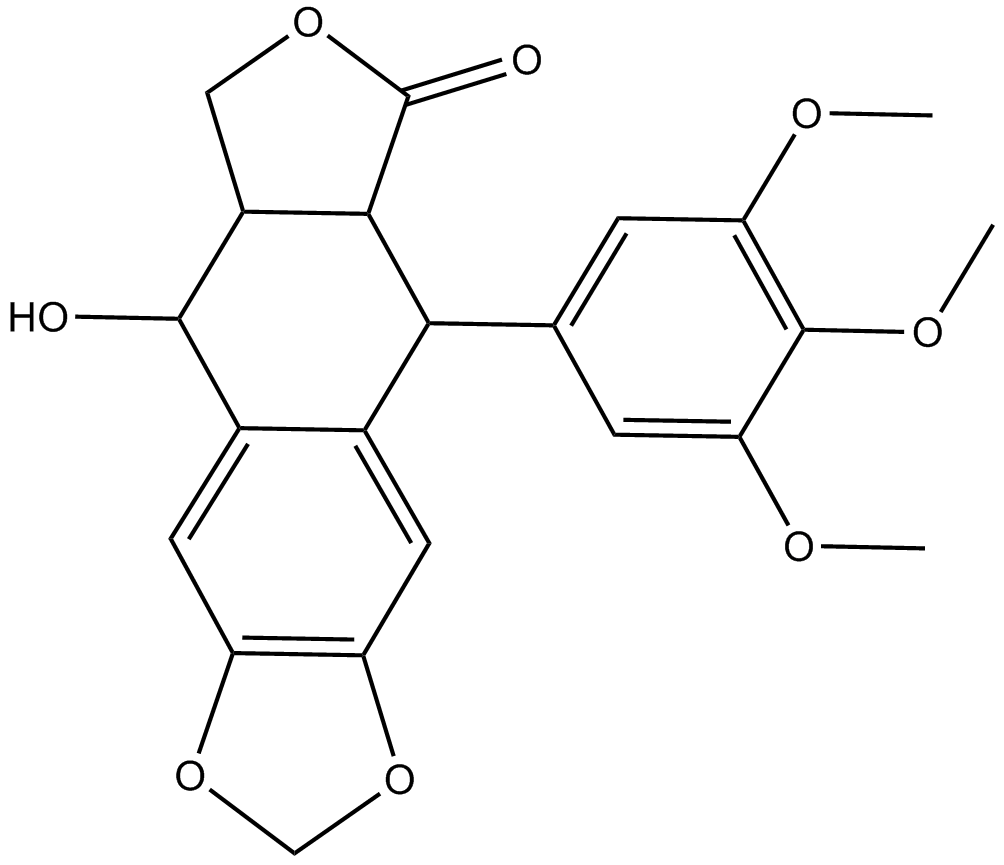AXL1717 (Synonyms: AXL 1717, NSC 36407, Picropodophyllin, PPP) |
| Catalog No.GC17045 |
A potent and selective inhibitor of IGF-1R
Products are for research use only. Not for human use. We do not sell to patients.

Cas No.: 477-47-4
Sample solution is provided at 25 µL, 10mM.
AXL1717 (Picropodophyllotoxin) is a selective inhibitor of IGF-1R with IC50 value rangs from 0.24-0.33 μM [1].
IGF-1R (type 1 insulin-like growth factor receptor) is a transmembrane receptor that activated by IGF-1 and plays an important role in cell growth and anabolic effects in adults. It has been reported that over-expression of IGF-1R is correlated with a variety of cancers and its inhibitors has been revealed to anti-cancer in clinical study [1] [2].
AXL 1717 is a potent IGF-1RTK inhibitor and has ability to inhibit tumor cells combined with HDAC inhibitor LBH589. When tested with 4 human myeloma cells (RPMI 8226, Karpas707, LP-1, and OPM-2) and 1 murine cell (5T33MM), AXL1717 treatment markedly decreased cell survival in a dose-dependent manner, arrested cell cycle in G2-M phase and induced cell apoptosis by inhibiting IGF-1RTK [1]. In four colon carcinoma cell lines (HT-29, HCT-116, DLD-1 and CaCO-2), AXL1717 treatment showed high ability to inhibit cell proliferation and migration in a dose-dependent manner [2].
In mouse model with 5TMM subcutaneous xenograft, administration of AXL 1717 (1.5 mg/d) resulted in a prolonged survival in combination with LBH (2.5 mg/kg/d) compared with control group [1].
AXL1717 has been tested to treat non-small cell lung cancer patients in a Phase I/II clinically [3].
References:
[1].Lemaire, M., et al., The HDAC inhibitor LBH589 enhances the antimyeloma effects of the IGF-1RTK inhibitor picropodophyllin. Clin Cancer Res, 2012. 18(8): p. 2230-9.
[2].Feng, X., et al., Multiple antitumor effects of picropodophyllin in colon carcinoma cell lines: clinical implications. Int J Oncol, 2012. 40(4): p. 1251-8.
[3].Ekman, S., et al., Clinical Phase I study with an Insulin-like Growth Factor-1 receptor inhibitor: experiences in patients with squamous non-small cell lung carcinoma. Acta Oncol, 2011. 50(3): p. 441-7.
Average Rating: 5 (Based on Reviews and 30 reference(s) in Google Scholar.)
GLPBIO products are for RESEARCH USE ONLY. Please make sure your review or question is research based.
Required fields are marked with *




